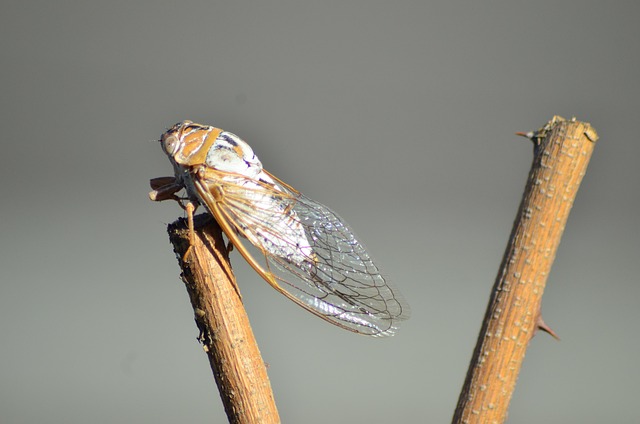Silverfish prefer dark, moist environments with organic materials and are most active at night, hiding in cracks, crevices, appliances, rugs, cabinets, and wall voids. Regular visual inspections during the day or early evening are crucial to identify these spots. Understanding their behavior allows targeted control efforts, disrupting feeding patterns and eventually eliminating infestations. Common locations include dark, humid areas and materials rich in starch or cellulose. Sealing entry points, regular cleaning, decluttering, and applying insecticides can aid removal. Severe infestations may require professional pest control services.
“Uncover the secrets of silverfish hiding spots and take back your space! This comprehensive guide delves into the world of thorough inspections, crucial for identifying and addressing silverfish infestations. Understanding these insects’ behavior and favored hiding places is the first step to effective removal.
Learn powerful visual inspection techniques to detect their presence and discover common areas where they thrive. Equip yourself with proven strategies for eliminating silverfish infestations once and for all, ensuring a pest-free environment.”
Understanding Silverfish Behavior and Their Hiding Spots
Silverfish are elusive creatures, preferring to stay hidden and out of sight. Understanding their behavior is key to effective silverfish infestation removal. These insects are most active at night, when they scurry around in search of food and suitable hiding spots. They are attracted to dark, moist environments with access to organic materials like paper, cardboard, and wood. Common hiding spots include cracks, crevices, behind appliances, under rugs, inside cabinets, and within wall voids.
Identifying these hiding spots is crucial for successful silverfish control. Thorough inspections during the day or early evening can help spot telltale signs of their presence. Look for small holes in fabric or paper items, dark stains on walls or ceilings caused by shed exoskeletons, and tiny insect fragments. By understanding where silverfish are most likely to be found, you can target your control efforts more effectively, breaking up their hiding spots and disrupting their feeding patterns to eventually eliminate the infestation.
Visual Inspection Techniques to Spot Silverfish Activity
When conducting thorough inspections for silverfish hiding spots, visual inspection techniques are paramount. Start by examining corners, cracks, and crevices, as these are common places where silverfish seek shelter. Use a flashlight to illuminate dark areas, and look for live insects, shed skins, or faint traces of their presence. Pay close attention to walls, floors, ceilings, and baseboards, where these pests tend to proliferate unnoticed.
Silverfish are adept at blending into their environment, so employ magnifying glasses or digital cameras with zoom capabilities to scrutinize hard-to-reach areas. Check for small holes or damage to materials like paper products, books, or cardboard, as silverfish feeding traces can be visible. Regular visual inspections enable proactive silverfish infestation removal and help prevent these pests from establishing breeding grounds in your home or commercial space.
Common Areas Where Silverfish Infestations Occur
Silverfish are elusive creatures, so finding them requires a systematic approach. While they prefer hidden spots, some areas in your home or business are more susceptible to infestations. Common hiding places include dark, humid spaces like basements, crawl spaces, and attics. They’re also drawn to materials high in starch or cellulose, such as paper products, cardboard boxes, and fabric items stored for extended periods. Cracks in walls, behind appliances, under sinks, and within floorboards are other favored locations—any narrow, inaccessible void provides the perfect shelter. Regularly inspecting these areas is crucial during silverfish infestation removal efforts.
Effective Removal Strategies for Eliminating Silverfish Infestations
Silverfish infestation removal requires a systematic approach. Once identified, implementing effective strategies is crucial to eliminating these pests. The first step involves sealing entry points and hiding spots by filling cracks, gaps, and any openings with caulk or similar materials. This physical barrier prevents silverfish from re-entering the space.
Regular cleaning and decluttering are also vital. Silverfish thrive in dark, damp environments with access to food sources like paper products, fabrics, and starchy items. Maintaining a clean home, promptly addressing leaks, and reducing moisture levels disrupt their habitat. Using insecticides specifically designed for silverfish, applying them to hidden areas and along walls, can provide additional control. Professional pest control services offer advanced methods and treatments tailored to severe infestations.
Thorough inspections are key to identifying and addressing silverfish hiding spots. By understanding their behavior, employing effective visual inspection techniques, and targeting common infestations areas, you can successfully implement strategies for silverfish infestation removal. Remember, proactive measures and professional expertise are essential in eradicating these persistent pests and maintaining a pest-free environment.
